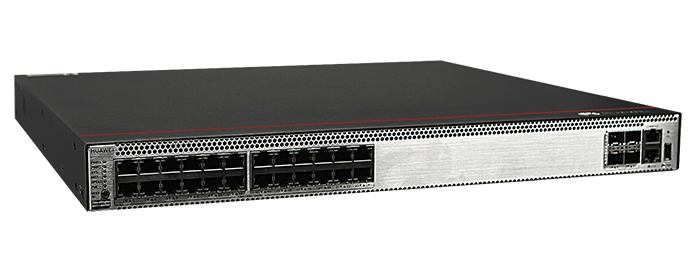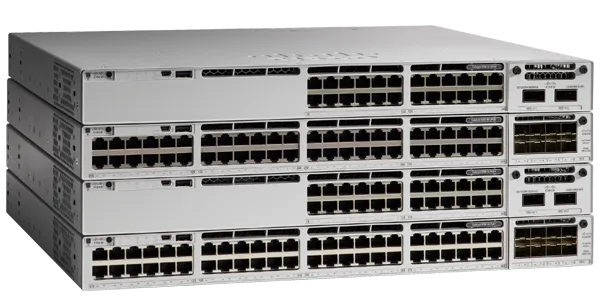
































The Cisco Catalyst 9300 Seriesis one of the most powerful enterprise network switches available, designed to offer flexibility, scalability, and enhanced security features. One of the standout features of the Cisco 9300Series is its ability to stack multiple switches to increase capacity and improve network efficiency. This guide will provide an in-depth look at how to configure Cisco 9300 stacking, outlining both the benefits and steps to set up this robust feature.
Cisco Catalyst 9300 stacking allows multiple switches to be treated as a single logical unit, combining them into a unified system. This ensures simplified management, enhanced redundancy, and greater flexibility in port distribution and bandwidth utilization. A stack of switches will act as a single switch from the management perspective, enabling centralized configuration and troubleshooting.
1. High Availability: With Cisco 9300 stacking, if one switch in the stack fails, the other switches continue operating, ensuring uninterrupted service.
2. Scalability: You can add more switches to a stack as your network grows without affecting the existing configuration.
3. Simplified Gestión: Managing multiple switches from a single IP address reduces complexity.
4. Load Balancing: Traffic can be distributed evenly across the stack to improve performance.
5. Cost Efficiency: Stacking reduces the need for additional management devices and licensing costs.
Before configuring Cisco 9300 stacking, it’s important to understand the essential components involved in this setup:
The StackWise cables are used to connect individual Cisco Catalyst 9300 switches together physically. These cables are critical for facilitating high-speed communication between stacked switches.
Each Cisco 9300 switch in the stack requires a stacking module to connect via the StackWise cables. These modules can support high throughput and ensure seamless data transmission between switches.
Within the stack, one switch is automatically elected as the master switch. The master switch is responsible for controlling the stack’s operations, including configuration management, routing, and processing network data. The election of the master switch occurs automatically, but the administrator can influence the election process by setting priorities.
To configure stacking on Cisco 9300 switches, follow the step-by-step instructions outlined below.
Before starting the configuration process, ensure all the switches in the stack are Cisco Catalyst 9300 models and have compatible IOS versions. Incompatible versions of IOS may cause issues in the stacking process.
Command: Use the following command to check the IOS version on each switch:
Mostrar la versión
Physically connect the StackWise cables to each switch, creating a ring topology. This means that the first switch is connected to the second, the second to the third, and the last switch is connected back to the first switch.
Nota: A ring topology ensures redundancy, so if one cable fails, the stack can still function.
After physically connecting the switches, power them on. It is recommended to power them on one at a time, starting with the switch that you want to become the master. The switch that powers on first typically becomes the master switch.
To ensure a specific switch becomes the master, you can manually set the stack priority. The switch with the highest priority will become the master switch. If two switches have the same priority, the one that powered on first becomes the master.
Command: Use the following command to set the priority of a switch:
switch stack-member-number priority value
For example, to set switch 1 with the highest priority (15):
switch 1 priority 15
Once all switches are powered on and connected, verify that the stack is properly configured and recognized. You can use the following command to check the status of the stack:
Command:
show switch
This will display a list of all the switches in the stack, their role (master or member), and their priority.
To ensure your stacking configuration runs smoothly and performs optimally, here are some best practices to consider:
Ensure all switches in the stack are running the same IOS version. Mismatched versions can cause stack instability and operational issues.
Always use a full ring topology when connecting StackWise cables to avoid losing connectivity if one cable fails.
Monitor the health and performance of the stack regularly to identify any potential issues early on. Use commands like `show switch` and `show switch stack-ports` to verify the status of each switch and port.
Make sure to plan and test failover scenarios, where one switch in the stack may go down. This will help ensure that your network continues to operate seamlessly even during outages.
Ports: 8 x 1GbE PoE+ ports, 2 x 10GbE uplink ports
Stacking Bandwidth: Up to 480 Gbps per stack
Redundancy: StackPower and StackWise redundancy for high availability
Switching Capacity: Up to 2.93 Tbps
Power Supply Options: 350W, 715W, and 1100W power supplies
Security Features: MACsec encryption, TrustSec, and segmentation support
Management: Centralized management through Cisco DNA Center
If issues arise during the configuration or operation of the Cisco 9300 stacking, follow these troubleshooting steps:
Solution: Ensure that all StackWise cables are properly connected and seated. Run the following command to check the status of stack ports:
show switch stack-ports
This will display the status of the stack ports and indicate any faulty connections.
Solution: Check the IOS version of the switch. All switches in a stack must run the same IOS version to function correctly. If the IOS versions are mismatched, upgrade the switch that fails to join the stack to the same version as the others.
Solution: If the wrong switch is elected as the master, verify the stack priority of each switch using the `show switch` command. Reconfigure the priority as necessary to ensure the desired switch becomes the master.
Cisco 9300 stacking is a powerful feature that enables network administrators to manage multiple switches as a single logical unit. By configuring stacking, you can increase redundancy, simplify management, and enhance network performance. This guide has provided a step-by-step process for setting up stacking on Cisco Catalyst 9300 switches, alongside best practices and troubleshooting tips to ensure smooth operation.
Cisco Catalyst 9300 Series Switches
For Cisco product list and quote, please visit: https://www.hi-network.com/categories/cisco or contact us at www.hi-network.com (Email: [email protected] (en inglés))
 Etiquetas calientes:
hot products
Etiquetas calientes:
hot products